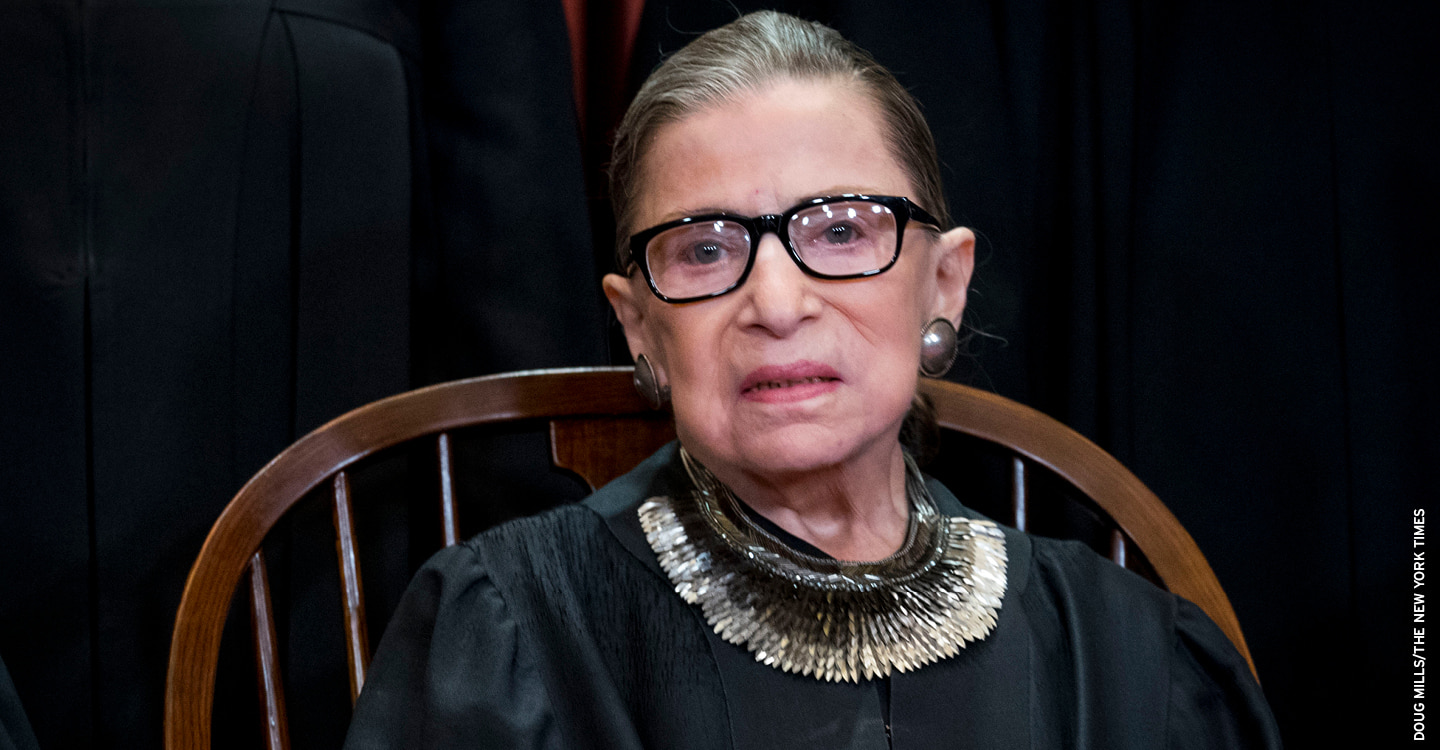The death on Friday of Supreme Court Justice Ruth Bader Ginsburg has set off an enormous battle over who will replace her and injected a new element of uncertainty into the bitter presidential race. She died at her home in Washington, D.C., of complications from pancreatic cancer.
Ginsburg, 87, was the second woman to serve on the Supreme Court and was a pioneering advocate for women’s rights for decades before joining the nation’s highest court. She served on the Supreme Court for 27 years, becoming the leader of the Court’s liberal wing in the last decade.
President Trump vowed to fill her vacant seat immediately and said that he would choose a woman.
“We have this obligation, without delay!” Trump tweeted.
Since taking office, Trump has named two justices to the nine-member Court: Neil M. Gorsuch and Brett M. Kavanaugh. If a third Trump nominee is approved by the U.S. Senate to replace Ginsburg, it would all but certainly expand the conservative majority and diminish liberal influence on the Supreme Court, possibly for decades.
Justice Ginsburg said before her death that her “most fervent wish” was that she not be replaced before a new president took office. Former Vice President Joe Biden, the Democratic nominee for president, said that the winner of the election should choose her successor.
When Justice Antonin Scalia died in February 2016, almost nine months before the election, Senate Majority Leader Mitch McConnell, a Republican, refused to consider President Obama’s nomination of Merrick Garland to fill the empty seat. McConnell said then that the Senate shouldn’t confirm a nominee so close to a presidential election. The president has the authority to nominate Supreme Court justices, but they must be confirmed by the Senate before taking a place on the bench. McConnell’s unwillingness to give Garland a hearing meant that his seat remained empty until President Trump took office and named a new nominee.
“The American people should have a voice in the selection of their next Supreme Court justice,” McConnell said at the time. “Therefore, this vacancy should not be filled until we have a new president.”
But just hours after Ginsburg’s death, and with the presidential election only 46 days away, McConnell vowed to move ahead quickly with approving whomever President Trump nominates to replace her.
“President Trump’s nominee will receive a vote on the floor of the United States Senate,” McConnell said.
Democrats say McConnell’s plan amounts to hypocrisy. They argue he must adhere to the principle he invented: that the Senate shouldn’t fill an open seat in an election year before a new president is sworn in.
“They set this precedent,” said Senator Amy Klobuchar, Democrat of Minnesota, speaking on CNN. “They can’t mess around.”
Republicans control the Senate 53 to 47, and a simple majority vote is all that’s needed now to confirm a Supreme Court nominee. That means that Democrats won’t be able to stop the confirmation process unless four Republican senators decide they won’t support it. (Democrats need four Republican senators to oppose the nomination because, under the Constitution, Vice President Mike Pence, a Republican, would break a tie vote in the Senate.) Over the weekend, two Republican senators, Susan Collins of Maine and Lisa Murkowski of Alaska, indicated that they wouldn’t support any nominee before a new president is chosen.

